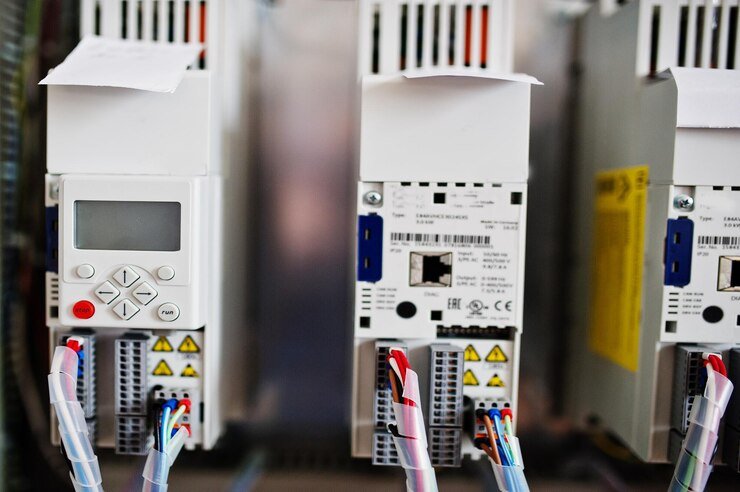Introduction
In today’s energy-conscious world, optimizing electrical efficiency is paramount for both economic and environmental reasons. One critical aspect of this optimization is power factor correction (PFC), a technique used to improve the efficiency of electrical systems by reducing reactive power.
Companies like power factor correction kvasaver.com specialize in providing solutions that enhance power factor, leading to significant energy savings and improved system performance.
Understanding Power Factor and Its Impact
The power factor of an electrical system is a measure of how effectively the electrical power is being used. It is defined as the ratio of real power (measured in kilowatts, kW) that performs useful work to the apparent power (measured in kilovolt-amperes, kVA) that flows in the circuit. A power factor of 1, or unity, indicates maximum efficiency, where all the supplied power is effectively utilized. However, in practical scenarios, power factors are often less than 1 due to the presence of reactive power caused by inductive loads such as motors and transformers. This reactive power does not perform any useful work but contributes to the total power flow, leading to inefficiencies.
A low power factor results in higher apparent power, which means that utilities need to supply more current to meet the same real power demand. This increased current can lead to several issues, including increased losses in the electrical distribution system, higher energy costs, and the need for larger capacity equipment. Therefore, improving the power factor is essential for enhancing the efficiency of electrical systems and reducing operational costs.
Methods of Power Factor Correction
Power factor correction involves the use of devices or techniques to reduce the phase difference between voltage and current, thereby minimizing reactive power and improving efficiency. The most common methods include:
- Capacitor Banks: Installing capacitors in parallel with inductive loads is a widely used method for power factor correction. Capacitors provide leading reactive power, which offsets the lagging reactive power caused by inductive loads, thereby improving the overall power factor. This method is simple, cost-effective, and suitable for a wide range of applications.
- Synchronous Condensers: These are synchronous motors that operate without a mechanical load. By adjusting the excitation of the motor, it can supply reactive power to the system, thereby improving the power factor.
- Active Power Factor Correction Devices: These electronic devices use power electronics to control the amount of reactive power in the system dynamically. They are capable of providing precise power factor correction and are suitable for applications with varying loads. However, they are more expensive and complex compared to passive methods like capacitor banks.
The Role of kVAsaver.com in Power Factor Correction
kVAsaver.com specializes in providing comprehensive power factor correction solutions tailored to the specific needs of businesses. Their services include:
- Energy Audits: Conducting thorough assessments of electrical systems to identify inefficiencies and determine the potential benefits of power factor correction. This involves analyzing the current power factor, identifying sources of reactive power, and evaluating the capacity of existing equipment.
- This may involve the installation of capacitor banks, synchronous condensers, or active power factor correction devices, depending on the nature of the loads and the desired level of correction.
- Monitoring and Management: Providing systems for continuous monitoring of power factor and overall electrical system performance. This allows for proactive management and maintenance, ensuring sustained efficiency gains and early detection of potential issues.
By leveraging the expertise of kVAsaver.com, businesses can achieve significant improvements in energy efficiency, leading to reduced operational costs and a lower environmental footprint.
Benefits of Implementing Power Factor Correction
Implementing power factor correction offers numerous advantages, including:
- Reduced Energy Costs: Improving the power factor reduces the amount of apparent power required, leading to lower energy consumption and reduced utility bills. Many utility companies also impose penalties for low power factor, so correction can help avoid these additional costs.
- Increased System Capacity: By reducing the reactive power component, the electrical system can accommodate additional loads without the need for upgrading infrastructure, thereby increasing the system’s capacity.
- Improved Voltage Regulation: Power factor correction helps in maintaining voltage levels within desired ranges, which is crucial for the proper operation of electrical equipment. Improved voltage regulation leads to enhanced performance and longevity of equipment.
- Environmental Benefits: Enhanced energy efficiency results in reduced greenhouse gas emissions, contributing to environmental sustainability efforts. By lowering energy consumption, businesses can reduce their carbon footprint and support global initiatives aimed at combating climate change.
Conclusion
Power factor correction is a vital strategy for enhancing the efficiency of electrical systems, leading to significant economic and environmental benefits. Companies like kVAsaver.com offer specialized solutions that help businesses optimize their power usage, reduce operational costs, and contribute to a more sustainable future.

